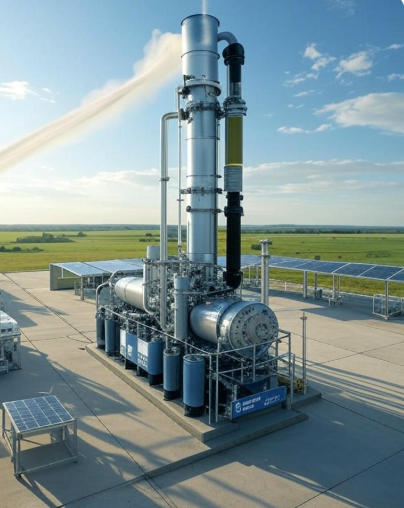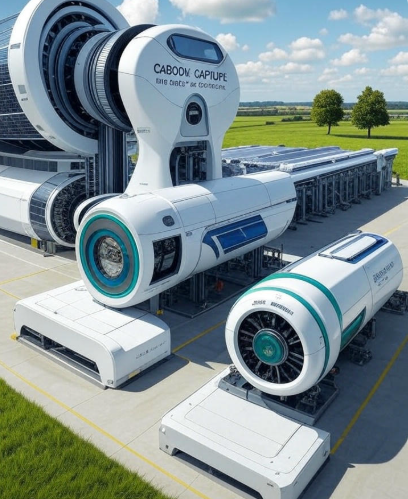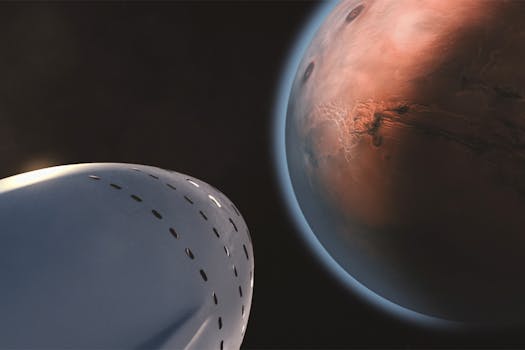Last week, I stood next to what looks like a massive air conditioning unit in the middle of Iceland. But this machine isn’t cooling anything – it’s literally sucking carbon dioxide out of the atmosphere and turning it into rock. Welcome to the wild world of Direct Air Capture, where science fiction meets climate reality.
The numbers are staggering. We pump about 36 billion tons of CO2 into the atmosphere every year, and we need to start pulling some of it back out if we want to avoid the worst effects of climate change. That’s where carbon capture technology comes in, and trust me, some of these projects will blow your mind.
Why Everyone’s Suddenly Obsessed with Capturing Carbon
Here’s the thing about climate change that nobody wants to admit: even if we stopped all emissions tomorrow (which we won’t), we’d still have too much CO2 in the atmosphere. We’ve already passed 420 parts per million, and scientists say we need to get back down to 350 ppm to avoid serious trouble.
That’s like trying to un-ring a bell, except the bell is the entire atmosphere and we’ve been ringing it non-stop for 150 years.
Carbon capture comes in two main flavors. There’s point-source capture, where you grab CO2 right from smokestacks and industrial facilities before it escapes. Then there’s Direct Air Capture (DAC), which is the really crazy stuff – machines that can pull CO2 straight out of regular air, anywhere on Earth.
The technology has existed for decades, but it’s only recently become cheap enough and efficient enough to actually matter. And with governments throwing billions of dollars at the problem, we’re seeing some truly remarkable projects come online.

Case Study 1: Climeworks’ Orca Plant – The Iceland Pioneer
Let me tell you about the machine I mentioned earlier. Climeworks, a Swiss company, built what they call the Orca plant in Iceland, and it’s the world’s largest Direct Air Capture facility currently running.
The Setup Orca consists of eight large collectors that look like oversized shipping containers. Each one houses fans that suck in ambient air, which then passes over a filter material that grabs onto CO2 molecules. When the filters get saturated, they heat them up to release pure CO2.
But here’s the clever part – instead of storing the CO2 in tanks or underground caverns like most projects do, Orca mixes it with water and pumps it deep into Iceland’s volcanic rock. Within two years, the CO2 literally turns into stone through natural chemical processes.
The Numbers Orca captures about 4,000 tons of CO2 per year. That might sound like a lot, but put it in perspective – it’s roughly what 870 cars produce annually. The entire facility runs on renewable geothermal energy from Iceland’s volcanic activity, making it completely carbon-negative.
What We Learned The biggest lesson from Orca isn’t about the technology – it’s about location strategy. Iceland offers cheap renewable energy, stable geology for storage, and a government that actually wants this stuff built. Climeworks proved that DAC works at commercial scale, but they also showed us that where you build these things matters as much as how you build them.
The cost per ton is still around $600-800, which is expensive but dropping fast. Climeworks is already building Mammoth, a facility ten times larger that should bring costs down significantly.
Case Study 2: Microsoft’s Billion-Dollar Bet with Occidental Petroleum
When Microsoft announced they were buying carbon removal credits from a company called 1PointFive (owned by oil giant Occidental Petroleum), a lot of people scratched their heads. Why would a tech company partner with Big Oil on climate solutions?
The Strategy Microsoft committed to removing a million tons of CO2 over 20 years through 1PointFive’s planned DAC facilities in Texas. But this isn’t just about buying credits – Microsoft is essentially funding the development of massive DAC plants by guaranteeing a customer for their output.
1PointFive is building plants that dwarf anything we’ve seen before. Their first facility, called Stratos, will capture 500,000 tons per year when it’s finished. That’s more than 100 times bigger than Orca.
The Technology Instead of Climeworks’ filter approach, 1PointFive uses a liquid solvent system. Air gets bubbled through a chemical solution that absorbs CO2, then they heat the solution to release pure CO2 gas. It’s more energy-intensive but can handle much larger volumes of air.
The captured CO2 gets pumped into depleted oil wells in Texas, where it’s permanently stored. Occidental knows these underground formations better than anyone – they’ve been pumping oil out of them for decades.
Why This Matters Microsoft’s deal proves that corporate buyers are willing to pay premium prices for verified carbon removal. They’re paying an estimated $100-600 per ton, which gives 1PointFive the financial certainty they need to build huge facilities.
More importantly, it shows how traditional fossil fuel companies might transition their expertise to climate solutions. Occidental’s knowledge of underground geology and large-scale industrial operations turns out to be exactly what DAC projects need.
Case Study 3: Carbfix’s Volcanic Storage Revolution
Sometimes the best innovations come from solving a completely different problem. CarbFix started as a way to deal with CO2 that naturally comes up from geothermal power plants in Iceland, but they accidentally created one of the most promising carbon storage methods on the planet.
The Science Here’s what makes CarbFix special: they figured out how to turn CO2 into rock in just two years instead of the hundreds or thousands of years it normally takes. They do this by dissolving CO2 in water and injecting it into volcanic basalt rock formations.
The dissolved CO2 reacts with minerals in the basalt to form solid carbonate minerals – essentially limestone. It’s permanent, safe, and doesn’t require ongoing monitoring like traditional CO2 storage in sedimentary rocks.
Real-World Results CarbFix has already stored over 75,000 tons of CO2 in Iceland’s rocks. They’ve proven the process works at scale and have started licensing their technology to projects around the world.
The really exciting part is how much basalt rock exists globally. About 10% of the world’s land surface is covered in basalt, including huge areas in India, Brazil, and the northwestern United States. If CarbFix’s process can be replicated in these locations, we could have virtually unlimited storage capacity.
Scaling Challenges The main limitation isn’t technology – it’s water. The process requires about 25 tons of water for every ton of CO2 stored. That’s manageable in Iceland, where water is abundant, but could be a problem in drier climates.
CarbFix is working on reducing water requirements and exploring the use of seawater for coastal basalt formations. Early tests suggest this could work, potentially opening up massive storage opportunities near major population centers.
Case Study 4: Canada’s Largest Industrial Carbon Capture Project
While everyone focuses on fancy Direct Air Capture, some of the biggest carbon reductions are happening through good old-fashioned point-source capture. The Boundary Dam project in Saskatchewan, Canada, proves that you can retrofit existing power plants to become carbon-neutral.
The Project SaskPower took a 50-year-old coal-fired power plant and added carbon capture equipment that grabs 90% of the CO2 from the smokestack. The captured CO2 gets compressed and piped to nearby oil fields, where it’s used for enhanced oil recovery – pumping it underground to push out more oil.
Technical Innovation The genius of Boundary Dam isn’t just the capture technology – it’s the integration. The power plant produces electricity, captures its own CO2, and sells that CO2 to oil companies who use it to extract more oil. It’s a closed-loop system where waste from one process becomes feedstock for another.
The facility captures about 1 million tons of CO2 per year, equivalent to taking 250,000 cars off the road. But unlike DAC projects, it also generates electricity for 100,000 homes.
Economic Lessons Boundary Dam cost $1.5 billion Canadian to build, which sounds expensive until you realize it’s retrofitting existing infrastructure rather than building from scratch. The project breaks even by selling captured CO2 to oil companies and electricity to the grid.
More importantly, it proved that carbon capture could work on existing fossil fuel infrastructure. There are thousands of power plants and industrial facilities worldwide that could be retrofitted using similar technology.
The Controversy Critics point out that using captured CO2 for enhanced oil recovery ultimately leads to more fossil fuel extraction and combustion. It’s a fair point – you’re capturing CO2 to help extract oil that will create more CO2 when burned.
But supporters argue that it’s better than doing nothing, and the economics make projects financially viable while we develop better long-term storage solutions.
Case Study 5: Charm Industrial’s Biomass-to-Carbon Play
Here’s a completely different approach that’s getting serious attention: instead of pulling CO2 out of the air, what if we prevent plant matter from rotting and releasing CO2 in the first place?
The Process Charm Industrial takes agricultural waste – things like corn stalks, rice hulls, and wood chips that would normally decompose – and heats them up in the absence of oxygen. This process, called pyrolysis, creates a charcoal-like material called bio-oil.
They then inject this bio-oil deep underground into rock formations, where it stays permanently. Since the original plant matter absorbed CO2 from the atmosphere while growing, storing the bio-oil is equivalent to removing CO2 from the air.
Why It’s Brilliant This approach solves multiple problems at once. Farmers get paid for agricultural waste they used to burn or leave to rot. The process is much cheaper than Direct Air Capture – around $100-200 per ton instead of $600-800. And it uses existing infrastructure like oil wells for storage.
Charm has already stored thousands of tons of carbon and has contracts with major companies like Shopify and Microsoft. They’re scaling up rapidly, with plans to capture millions of tons annually within the next few years.
The Scalability Question The big question is whether there’s enough agricultural waste to make a meaningful dent in global emissions. Charm estimates they could theoretically capture several billion tons per year globally, but that would require processing a significant portion of all agricultural waste worldwide.
Still, even capturing a few hundred million tons annually would be a major contribution to global carbon removal efforts.
What These Projects Tell Us About the Future
After studying these five cases, several patterns emerge that will shape the carbon capture industry going forward.
Location Is Everything The most successful projects are in places with cheap renewable energy, good geology for storage, and supportive government policies. Iceland, with its geothermal energy and volcanic rock, is almost ideal. Texas, with its oil infrastructure and underground storage capacity, is another sweet spot.
Economics Drive Adoption Projects that can sell their captured CO2 or get paid for carbon removal credits are scaling faster than those that rely on government funding alone. Microsoft’s billion-dollar commitment to buying carbon removal shows that corporate demand is real and growing.
Technology Diversity Is Good There’s no single solution that works everywhere. Direct Air Capture works well in some locations, point-source capture makes sense for existing industrial facilities, and biomass approaches can leverage agricultural waste streams. We need all of these technologies working together.
Scale Matters, But So Does Starting Even though current projects capture tiny amounts compared to global emissions, they’re proving the technology works and driving down costs. Orca might only capture what 870 cars produce, but it’s the foundation for Mammoth and dozens of other larger projects.
The carbon capture industry is at the same point the solar industry was in the early 2000s – expensive, small-scale, but improving rapidly. If these projects are any indication, we might see costs drop by 90% over the next decade, just like solar panels did.
The race to vacuum carbon out of the air is just getting started, and the winners will likely be the companies and countries that start building real projects today, not the ones waiting for perfect technology tomorrow.





Fascinating read! The idea of Direct Air Capture (DAC) sounds like something straight out of a sci-fi movie, but it’s incredible to see it becoming a reality. The fact that we’re already at 420 ppm of CO2 is alarming, and it’s clear that we need solutions like DAC to mitigate the damage. I’m curious, though, how scalable is this technology? Can it really make a dent in the 36 billion tons we emit annually? Also, what’s the energy cost of running these machines? It seems like a double-edged sword if it requires massive energy input. The Orca plant in Iceland is impressive, but I wonder if this approach can be replicated in less geologically favorable areas. What’s your take on the long-term feasibility of DAC? Do you think it’s a game-changer or just a small piece of the puzzle?
Thanks for the enthusiasm about DAC—it is definitely a cool tech with sci-fi vibes! To address your questions: DAC is scalability is a mixed bag. Current global capacity, like Climeworks’ Orca plant, captures only about 10,000 tons of CO2 annually—tiny compared to the 36 billion tons emitted. Scaling to meaningful levels (say, 1-10 billion tons/year) would require thousands of large-scale plants, massive land use, and infrastructure buildout, which could take decades and cost trillions. The tech is improving, but it’s not a silver bullet yet.
Energy cost is a big hurdle. DAC needs 1-2 MWh per ton of CO2 captured, often from renewables or geothermal (like in Iceland). In less geologically favorable areas, you’d need reliable clean energy sources, which could be a bottleneck in regions with weaker grids or less renewable potential. Innovations like solid sorbent DAC might cut energy needs, but we’re not there yet.
Long-term, DAC’s feasibility hinges on cost reductions (currently $600-$1,000/ton, needs to drop to ~$100/ton) and energy efficiency gains. It’s a piece of the puzzle, great for hard-to-eliminate emissions but not a substitute for deep decarbonization, like electrifying transport or scaling renewables. It’s promising but needs policy support (carbon pricing, subsidies) to scale fast. Game-changer? Maybe in 20-30 years, but for now, it’s a critical tool in a broader toolbox. What do you think—any other climate tech you’re excited about?